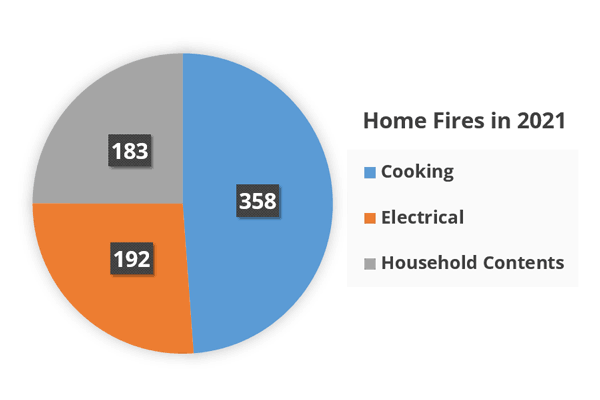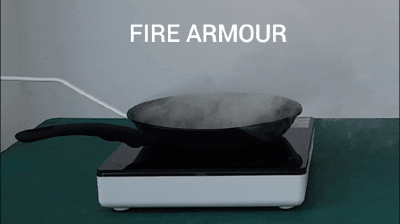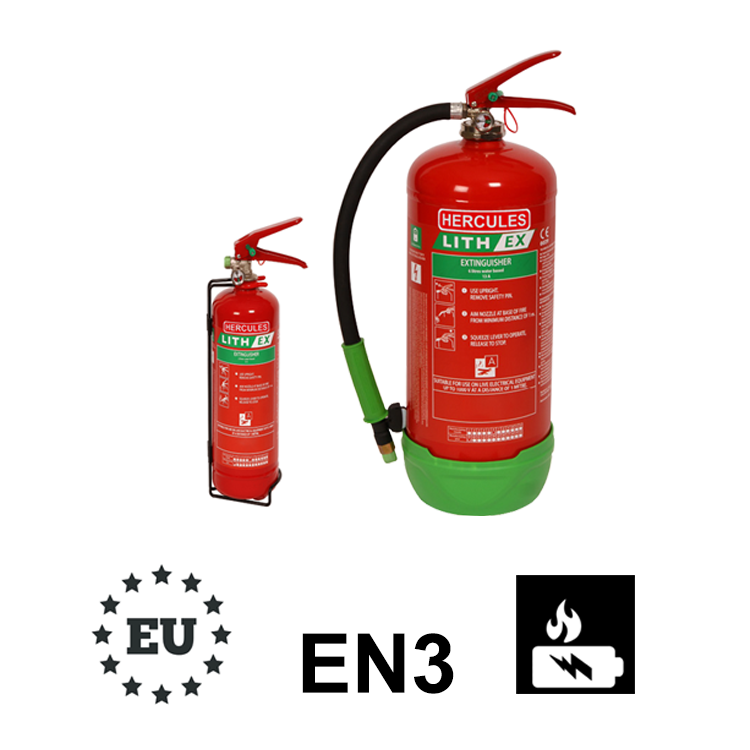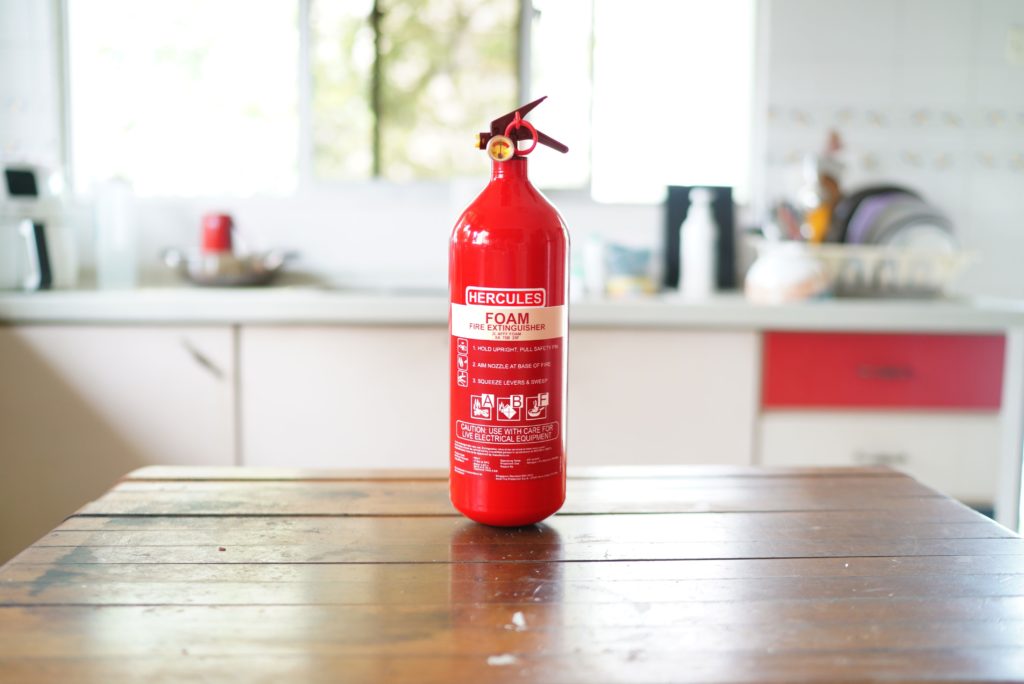The two most common types of fire extinguishers in Singapore are the dry powder fire extinguisher and the foam fire extinguisher.
Why do I need a fire extinguisher?
In just a matter of a few weeks, the local news has reported an alarming number of residential fires, from the fire in the Hougang HDB flat where the entire unit was burnt down, and fire in a Telok Blangah flat where 50 occupants had to be evacuated, to the most recent and tragic fire at a Jurong HDB flat which led to the death of one man.
Being aware that fire incidents in residential homes are not at all uncommon in Singapore, how can we then protect ourselves and our homes? The simple answer – equip your homes with suitable fire extinguishers for home use so that you can prevent small fires from getting out of hand!
As part of Fire Armour’s series of educational articles, our fire safety experts are here to share more about the use of fire extinguishers in your home – from what type to use, to how many you should have.

How do the different type of fire extinguishers work?
The dry powder fire extinguisher works by dispersing a “blanket” of powder which separates the fuel from oxygen and stops it from burning. While it is an economical solution for common fire classes, the dispersed powder causes a mess everywhere and is hard to clean up after.
The pricier foam fire extinguisher also works similarly by forming a coating over the surface of the fire and smothering it while cooling it down at the same time. Unlike the powder-type extinguisher, this does not block firefighting vision as the foam settles down (whereas the dust stays in the air) and the aftermath is much easier to clean. Also, it can combat more types of fires compared to its dry powder counterpart.
Here’s a table for a quick comparison between the two:
| TYPE | Hercules 2KG Dry Powder Fire Extinguisher | Hercules 2L Foam Fire Extinguisher |
| Class A | 0.325M3 | 0.2M3 |
| Class B | 36L | 46L |
| Electric Fire | YES | YES |
| Kitchen Fire | NO | 25L |
| Weight | 3.40 KG | 2.55 KG |
| Discharge Time | 11 + S | 18 + S |
Which fire extinguisher for kitchen?
If you do a lot of deep frying at home, then we would recommend you pick the foam fire extinguisher for your kitchen for two simple reasons.
The first is simple enough. Foam fire extinguishers unlike dry powder ones are tested and more suitable to put out deep-frying oil fires (a Class F fire) effectively.
The second is that kitchen fires tend to be extremely high-temperature fires with temperatures up to 300+ °C. As such, kitchen fires can cause huge fireballs upon contact with water – which is why you should never attempt to put out a kitchen fire with water. Foam extinguishers, with the ability to cool down the fire below the ignition point, make it most suitable for such fires.
Powder fire extinguishers are not suitable because while they may temporarily put out the fire, they will also quickly reignite due to the superheated fuel.
Do I need a fire extinguisher for my induction hob?
If you don’t have a gas stove, you must think that you don’t require a fire extinguisher, but that’s not entirely true.
A study published in Elsevier shows that induction cookers and hobs can just as easily cause fires in the kitchen too. Cooking oil heated by an induction cooker for 12 minutes can also automatically ignite and become a deadly class F fire.

We conducted our own in house experiment using the following:
1. An induction cooker
Purchased in 2022 October. (Model Ikea Tillreda Portable)
2. An induction pan (Model Ikea Hemlagad)
3. Soybean cooking oil
It should be noted that that the brand of the induction cooker and pan does not matter. It just so happens that Ikea has everything in their store. Any induction cooker is capable of causing a fire. Remember the fire triangle? Oxygen, fuel and heat will create a fire. This is also indicated very clearly on the induction cooker instruction manual that the induction cooker is a possible fire hazard.
The oil was thinly spreaded onto the pan to simulate realistic cooking. It took approximately 10 minutes for the induction cooker with a 2000w setting to create the fire in our factory.
Which fire extinguisher for electrical fires?
Outside of the kitchen, the danger lies in electrical fires – caused by malfunctioning electronic products, overloaded power sockets, and more.
In the case of extinguishing an electrical fire, both the dry powder fire and foam fire extinguisher are equally capable.
On both types of fire extinguishers, you will see the words “Use with care on live electrical equipment”. Our foam fire extinguishers have successfully passed the dielectric test, meaning it is safe to use on electrical fires up to 1000v at a minimum distance of 1m.
Having said that, SCDF actively discourages fighting electrical fires directly.
Tips when dealing with electrical fires: The electricity should first be turned off before attempting to fight the fire, as a live electrical current will continue generating heat and cause fires to reignite.
Do note that fires caused by electric scooter batteries are not considered electrical fires but rather lithium battery fires. For lithium battery fires, a specific lithium battery fire extinguisher is recommended. While it is possible to temporarily put out lithium battery fires with normal fire extinguishers, they will quickly reignite due to thermal runaway.

How many fire extinguishers do I need for my home?
In Singapore Standards Code of Practice 578 3.2.1, it is mentioned that “Fire Extinguishers shall be located so that no person needs to travel more than 15m to reach an extinguisher.” While this does not apply to homes, it is a useful reference to rely on.
For best practices, each level of your home should have at least two fire extinguishers to allow for easy access. According to SCDF statistics, kitchen fires have the highest occurrence rate. So it makes sense to have at least 1 fire extinguisher at the entrance to the kitchen. Another logical place to put the fire extinguisher would be in the bedroom under the light switch.
This is to avoid being trapped in the bedroom in the event a fire occurs in the living room and also for easy access should a fire break out in the middle of the night.
Why not use carbon dioxide fire extinguishers for homes?
While carbon dioxide fire extinguishers can fight Class B flammable liquid fires, they are very poor at fighting class A fires (the type of fires more common in residential homes) as there is usually not enough CO2 to displace the oxygen and class A flammables are quick to reignite.
A 2KG CO2 fire extinguisher weighs 6.4KG while a 2KG Powder fire extinguisher weighs 3.4KG. Given that they are much heavier for the same capacity, CO2 fire extinguishers are inconvenient for the average household member to use in the case of a fire.
Protect your home with a fire extinguisher today!
Keen to protect your home from accidental fires? Head over to Fire Armour’s online shop to equip your home with all the necessary fire protection equipment.
Our expert’s recommendation for home use is the Hercules 2L Foam Fire Extinguisher, a lightweight and powerful extinguisher that is capable of fighting Class A, B, and F fires effectively and quickly without making a mess after.
Get yours today!

